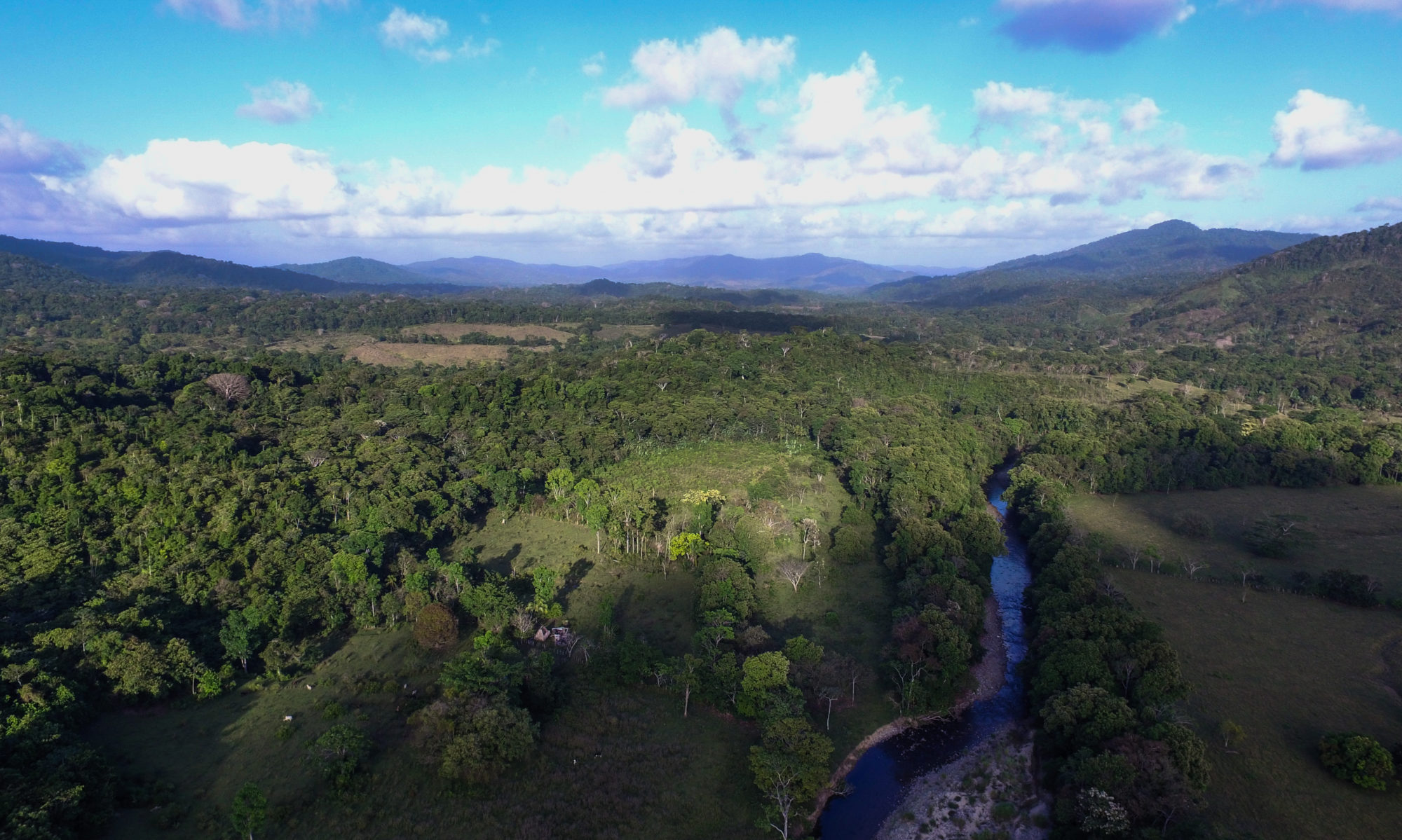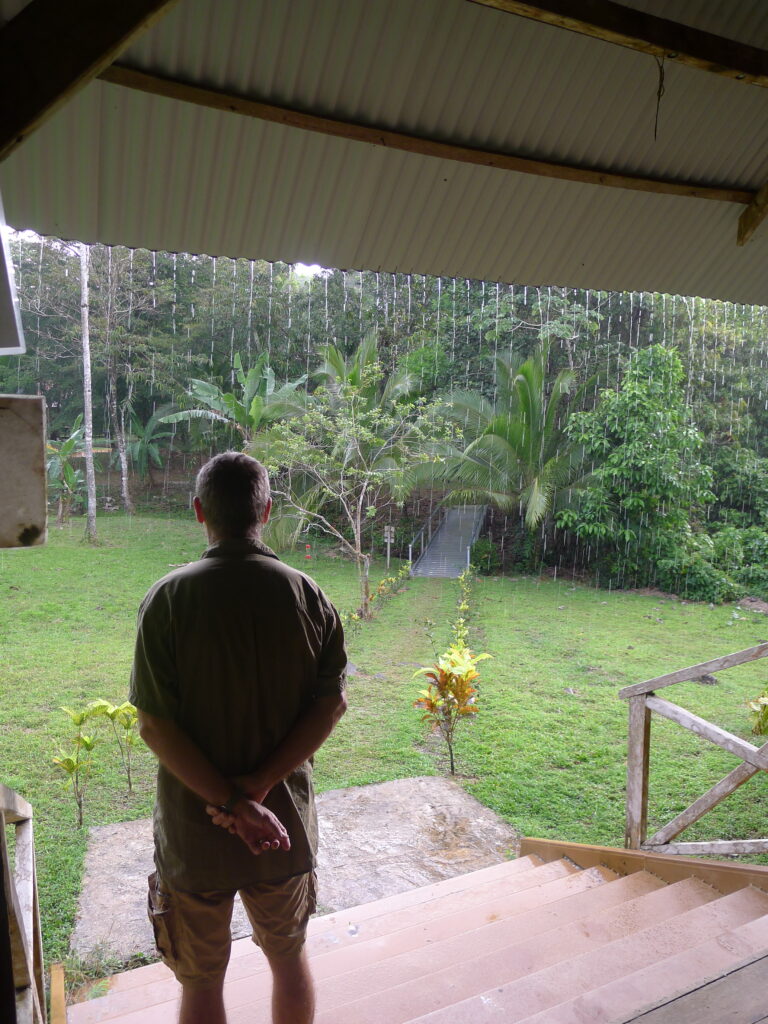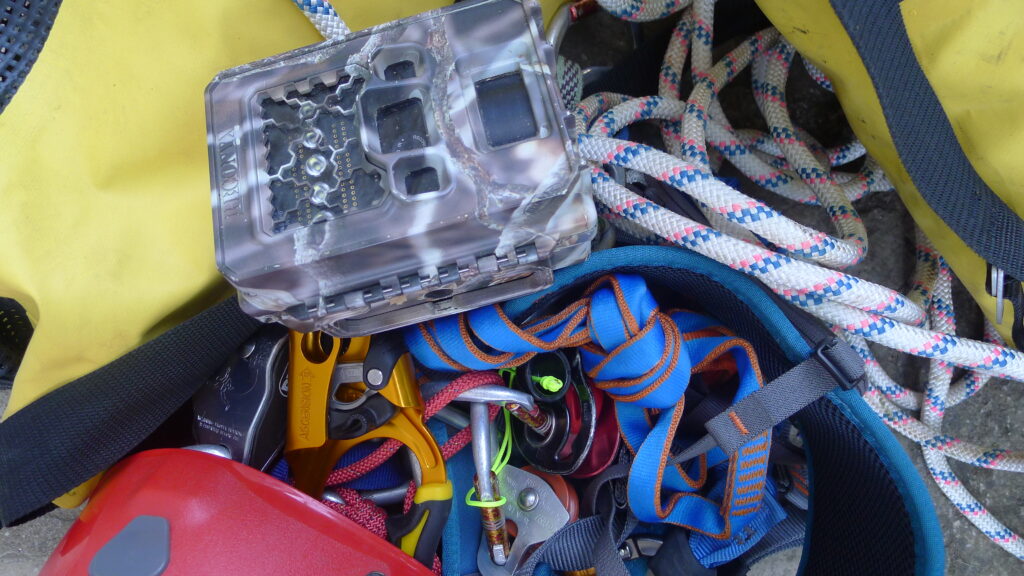In The Field at Cocobolo
Research
News from the field says it is rainy season in Panama and that it hasn’t stopped! At this time of year the constant convection driven afternoon downpours saturate the clay soils making access to Cocobolo especially difficult due to slippery roads and high rivers. It also makes it difficult to maintain a constant supply of researchers to the station. We are indebted to our local caretakers Cheñin Gonzalez and Leo Miranda for taking good care of the reserve during our absences. We couldn’t operate without them and we continue in our efforts to raise funds to maintain their salaries.
Work at the reserve typically slows down during these months, however, we have not been idle and have an exciting new project to announce. CREA has long used camera traps to document the wildlife wandering around the forest floor but up until now they have been used as an inventory tool. The plan now is to establish a permanent array across the reserve with paired camera-traps, one on the ground and the other in the trees. This more targeted approach will allow us to monitor a bigger range of rainforest inhabitants and, for the first time, include those that, living arboreally, have not been documented properly. With camera traps spaced equally apart and left in place for long periods we will be able to address a lot more questions ranging from basic confirmation of presence to abundance and population statistics as well as behaviour.
The study centres around Margay, one of the world’s least known small cats and inevitably one whose future existence is far from certain.
So we are proud to announce:
CREA’s Margay Project – Taking Camera Traps to Another Level
You can read more about it on our webpage here but essentially we want to find out more about the habits of margay, especially its arboreal nature. That’s why we are embracing the emerging discipline of arboreal camera-trapping. We are enlisting the help of arborist experts, from Tree Solutions-Fiji, to help us ascend high into the canopy to set half our camera-traps in this unexplored realm. It’s going to take some effort and there is going to be a sharp learning curve but we hope to gain a very special insight not only to the elusive semi-arboreal margay but to all the other hidden wildlife out of sight above our heads.
Setting up the array will take some time but once it is up the camera-traps can do their thing all year long with just the odd battery and memory card change leaving us with time on our hands. We plan to use this time to back up the camera-trap survey with good old fashioned field observations. This will be done at night, from portable platforms suspended in the canopy, using thermal imaging equipment to observe the activities of arboreal denizens
You may wonder why, if we have multiple camera-traps set in the trees we need to spend long uncomfortable nights perched up there too. Well, as mentioned before arboreal camera-trapping is in its infancy. Setting ground based camera-traps is relatively straightforward when you know the habits of your target species, for instance if you are looking for jaguar, you know they like good un-entangled trails to walk down. Site selection high up in the 3-D world of a tree is a whole other ball game. Almost nothing is known about the margay’s arboreal habits, other than it can rotate its hind feet to move head first down a tree and that it is very comfortable clambering around up there. In fact almost nothing is known about any of the arboreal animals found here in Panama, so we will be working with a healthy dose of guess work. If we can spend time actually watching how nocturnal animals move and behave in the canopy we may save ourselves a great deal of time, being able to fine tune our camera-trap placement to its optimum potential.
The rainforest is a special place, its biodiversity is astonishing, yet we know so little about it as it is notoriously difficult to study anything in a thick forest. Unlike a Savanna where you can sit in a vehicle and use binoculars to see for miles, you are lucky to see a few metres in the rainforest.
We hope that, by expanding the frontiers of research by taking our studies up into the trees, we will gain a lot of valuable information that will ultimately help inform future conservation plans for both the individual species we study and the rainforest as an ecosystem.
Field work is due to start in December, but until then we are busy trying to raise funds for the project through applying for (highly competitive) conservation grants, corporate sponsorship (watch this space for an announcement but looks like the arborist equipment may be taken care of thanks to some very generous sponsors) and private donations.
We will give you more updates on progress closer to the end of the year but in the meantime if any of you would like to help out, funding wise, do get in touch: trevor@crea-panama.org to discuss how best you can help, or through our donation page here mentioning Margay Project.


